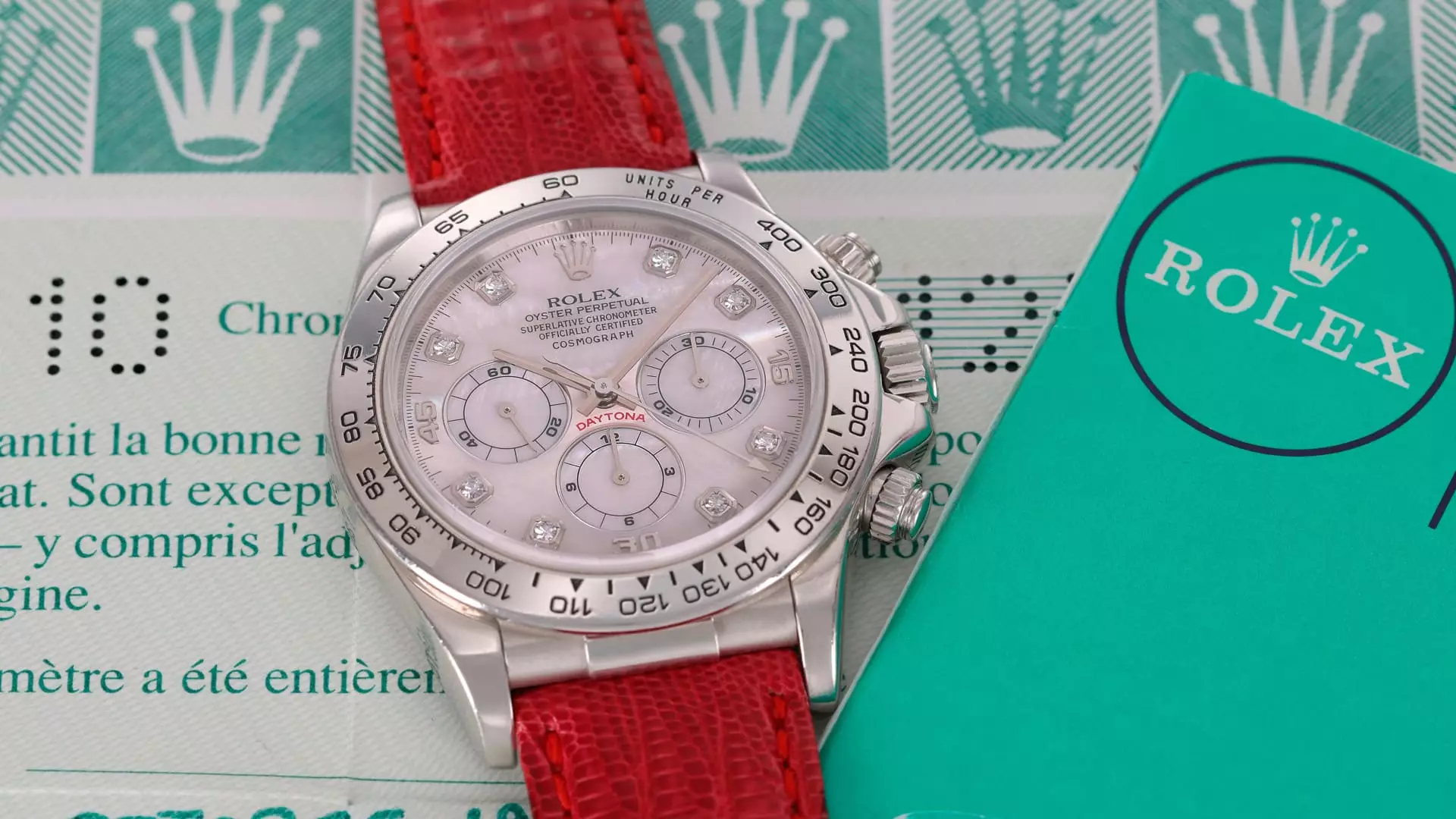The world of luxury watches has always been characterized by its exclusivity, craftsmanship, and history. Each timepiece tells a story, and none may be more compelling than the upcoming auction of a rare 1999 platinum Rolex Daytona at Sotheby’s Geneva. With an anticipated sale price reaching up to $1.7 million, this watch not only represents the pinnacle of Rolex manufacturing but also encapsulates the grandeur of heritage and bespoke craftsmanship often absent in modern consumer goods.
What sets this particular Rolex apart is its rarity — it is one of only four commissioned pieces, each uniquely tailored, and perhaps most intriguingly, it features a diamond-set dial. Unlike mass-produced luxury watches that have flooded the market, this Daytona’s exclusivity elevates it into the realm of collectible art, making it an attractive investment opportunity for those in-the-know within the high-stakes world of luxury commodities.
The Platinum Difference
Rolex traditionally built its reputation on stainless steel, yellow gold, and white gold timepieces. However, the innovation behind the platinum Daytona produced in 1999 creates a narrative of its own. With Rolex’s first introduction of platinum Daytona models occurring only in 2013, the existence of this pre-2013 piece is like uncovering a clandestine chapter of the Rolex chronicle, generating both intrigue and desirability among collectors. For those with a keen eye, this watch is a testament to the brand’s shifting boundaries and ambitions, laying the groundwork for its later ventures into uncharted territories of luxury.
The significance of the watch’s provenance cannot be overlooked. Developed under Patrick Heiniger, Rolex’s CEO during a pivotal moment in its history, the platinum Daytona embodies not just luxury but also innovation during a transformative era for the iconic brand. While the whispers of Heiniger’s personal fascination with platinum timepieces tantalize collectors, the mystery surrounding this watch only deepens its allure. In a market that thrives on stories, this particular narrative beckons to those drawn to both the lore and the legacy of luxury.
The Value of Uniqueness
What truly escalates the value of this timepiece is not merely its rarity but its distinctive features that differentiate it from its counterparts. The diamond-encrusted face speaks to not only the luxurious fabric of the timepiece but also to the taste and preferences of a select clientele. Collectors have increasingly gravitated towards pieces that are not just functional but also serve as statements of identity and prestige.
Collectively, the rarity of components like the dial and the platinum metal create an art piece for investment, connecting the buyer to the broader cultural heritage of luxury. The smart money sees watches as assets rather than mere accessories. The marked increase of over 125% in watch value over a decade underscores this evolving mindset, where increasingly savvy collectors not only prioritize aesthetics but also associated financial returns.
The Rise of a New Generation of Collectors
As the appeal of watches as investment vehicles rises, particularly among younger collectors under thirty, the luxury industry is witnessing a seismic shift. The entrance of this demographic is shaping perceptions of traditional luxury, infusing a fresh vitality into the marketplace. Institutions like Knight Frank highlight that this nascent interest has propelled watch prices to unprecedented levels, making vintage and limited-edition pieces more sought after than ever.
The recent slight cooling of prices, with a meager annual rise of 1.7%, hasn’t discouraged the broader trend of growth in the luxury watch market. With a five-year growth rate of 52.7%, watch collecting is undeniably becoming a sphere of confidence, taming the volatility of other investment classes. The intersection of timekeeping tradition with contemporary investment strategy hints at a future where watches, like artworks, achieve transformative value — moving from functional objects to symbols of financial acumen.
In this evolving landscape, the auction of the hallmark platinum Rolex Daytona signifies not just a singular event in watch history but also the confluence of legacy and investment that defines today’s luxury watch market. Its sale stands as a statement, reflecting the age-old aspiration for wealth while delving into the personal narrative that each watch carries. In a world eager for both stories and investments, pieces like this serve as both.

